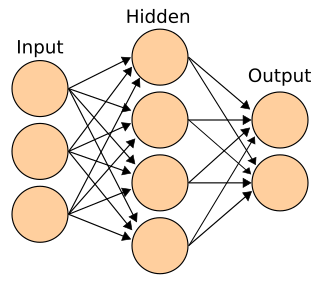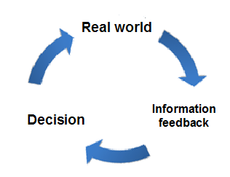
Cognitive science is the interdisciplinary, scientific study of the mind and its processes with input from linguistics, psychology, neuroscience, philosophy, computer science/artificial intelligence, and anthropology. It examines the nature, the tasks, and the functions of cognition. Cognitive scientists study intelligence and behavior, with a focus on how nervous systems represent, process, and transform information. Mental faculties of concern to cognitive scientists include language, perception, memory, attention, reasoning, and emotion; to understand these faculties, cognitive scientists borrow from fields such as linguistics, psychology, artificial intelligence, philosophy, neuroscience, and anthropology. The typical analysis of cognitive science spans many levels of organization, from learning and decision to logic and planning; from neural circuitry to modular brain organization. One of the fundamental concepts of cognitive science is that "thinking can best be understood in terms of representational structures in the mind and computational procedures that operate on those structures."
Cognitive psychology is the scientific study of mental processes such as attention, language use, memory, perception, problem solving, creativity, and reasoning.
Reason is the capacity of applying logic consciously by drawing conclusions from new or existing information, with the aim of seeking the truth. It is associated with such characteristically human activities as philosophy, religion, science, language, mathematics, and art, and is normally considered to be a distinguishing ability possessed by humans. Reason is sometimes referred to as rationality.

A thought experiment is a hypothetical situation in which a hypothesis, theory, or principle is laid out for the purpose of thinking through its consequences. The concept is also referred to as a Gedankenexperiment within the work of Ernst Mach and includes thoughts about what may have occurred if a different course of action were taken as opposed to what did in fact occur. The importance of this ability is that it allows us to imagine what may occur in the future, as well as the implication of alternate courses of action.
Deductive reasoning is the mental process of drawing deductive inferences. An inference is deductively valid if its conclusion follows logically from its premises, i.e. it is impossible for the premises to be true and the conclusion to be false.
In natural languages, an indicative conditional is a conditional sentence such as "If Leona is at home, she isn't in Paris", whose grammatical form restricts it to discussing what could be true. Indicatives are typically defined in opposition to counterfactual conditionals, which have extra grammatical marking which allows them to discuss eventualities which are no longer possible.

Connectionism is the name of an approach to the study of human mental processes and cognition that utilizes mathematical models known as connectionist networks or artificial neural networks. Connectionism has had many 'waves' since its beginnings.
Inferences are steps in reasoning, moving from premises to logical consequences; etymologically, the word infer means to "carry forward". Inference is theoretically traditionally divided into deduction and induction, a distinction that in Europe dates at least to Aristotle. Deduction is inference deriving logical conclusions from premises known or assumed to be true, with the laws of valid inference being studied in logic. Induction is inference from particular evidence to a universal conclusion. A third type of inference is sometimes distinguished, notably by Charles Sanders Peirce, contradistinguishing abduction from induction.
Soar is a cognitive architecture, originally created by John Laird, Allen Newell, and Paul Rosenbloom at Carnegie Mellon University. It is now maintained and developed by John Laird's research group at the University of Michigan.

The Wason selection task is a logic puzzle devised by Peter Cathcart Wason in 1966. It is one of the most famous tasks in the study of deductive reasoning. An example of the puzzle is:
You are shown a set of four cards placed on a table, each of which has a number on one side and a color on the other. The visible faces of the cards show 3, 8, blue and red. Which card(s) must you turn over in order to test that if a card shows an even number on one face, then its opposite face is blue?

Piaget's theory of cognitive development, or his genetic epistemology, is a comprehensive theory about the nature and development of human intelligence. It was originated by the Swiss developmental psychologist Jean Piaget (1896–1980). The theory deals with the nature of knowledge itself and how humans gradually come to acquire, construct, and use it. Piaget's theory is mainly known as a developmental stage theory.

Kenneth James William Craik was a Scottish philosopher and psychologist.
Dedre Dariel Gentner is an American cognitive and developmental psychologist. She is the Alice Gabriel Twight Professor of Psychology at Northwestern University, and a leading researcher in the study of analogical reasoning.
Philip Nicholas Johnson-Laird, FRS, FBA is a philosopher of language and reasoning and a developer of the mental model theory of reasoning. He was a professor at Princeton University's Department of Psychology, as well as the author of several notable books on human cognition and the psychology of reasoning.

The following outline is provided as an overview of and topical guide to thought (thinking):
Géry van Outryve d'Ydewalle is a Belgian scientist. He was professor in psychology with memory and cognition as main topics. He was head of the Laboratory of experimental psychology at the Katholieke Universiteit Leuven (Leuven) until 2012. He worked for some time with Professor William Kaye Estes at Rockefeller University (N.Y.) and lectured at the London School of Economics. In 1992, he was awarded the Francqui Prize on Human Sciences and was elected member of the Royal Flemish Academy of Belgium for Science and the Arts. From 1980 till 2004 he was successively member, Deputy Secretary-General (1984), Secretary-General (1992) and President (1996) of the International Union of Psychological Science. He has been elected as permanent secretary of the Royal Flemish Academy in succession to professor Niceas Schamp, as of 1 September 2010. Géry van Outryve d'Ydewalle has been active as a musician (traverso) in several chamber orchestras. He is the fifth of six children of Baron Pierre van Outryve d'Ydewalle, governor of West-Flanders from 1944 to 1979.
Counterfactual thinking is a concept in psychology that involves the human tendency to create possible alternatives to life events that have already occurred; something that is contrary to what actually happened. Counterfactual thinking is, as it states: "counter to the facts". These thoughts consist of the "What if?" and the "If only..." that occur when thinking of how things could have turned out differently. Counterfactual thoughts include things that – in the present – could not have happened because they are dependent on events that did not occur in the past.
The psychology of reasoning is the study of how people reason, often broadly defined as the process of drawing conclusions to inform how people solve problems and make decisions. It overlaps with psychology, philosophy, linguistics, cognitive science, artificial intelligence, logic, and probability theory.
The mental model theory of reasoning was developed by Philip Johnson-Laird and Ruth M.J. Byrne. It has been applied to the main domains of deductive inference including relational inferences such as spatial and temporal deductions; propositional inferences, such as conditional, disjunctive and negation deductions; quantified inferences such as syllogisms; and meta-deductive inferences.
Intuitive statistics, or folk statistics, is the cognitive phenomenon where organisms use data to make generalizations and predictions about the world. This can be a small amount of sample data or training instances, which in turn contribute to inductive inferences about either population-level properties, future data, or both. Inferences can involve revising hypotheses, or beliefs, in light of probabilistic data that inform and motivate future predictions. The informal tendency for cognitive animals to intuitively generate statistical inferences, when formalized with certain axioms of probability theory, constitutes statistics as an academic discipline.










